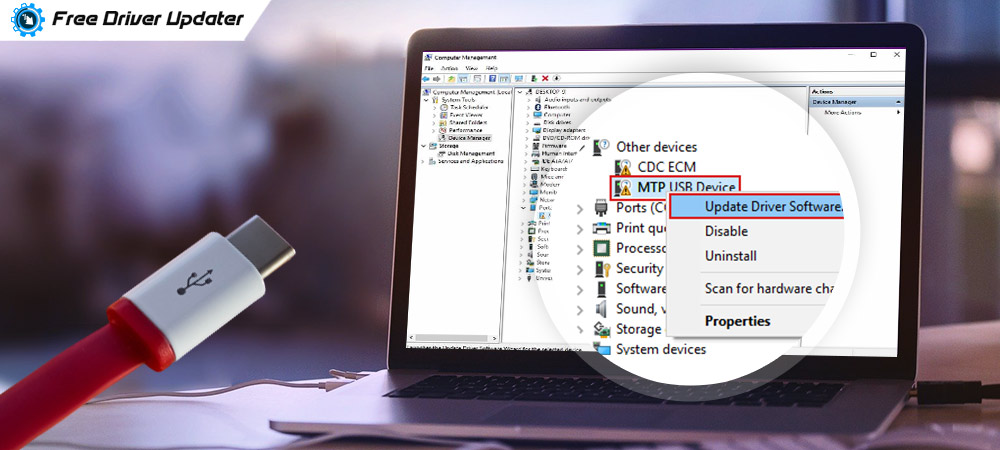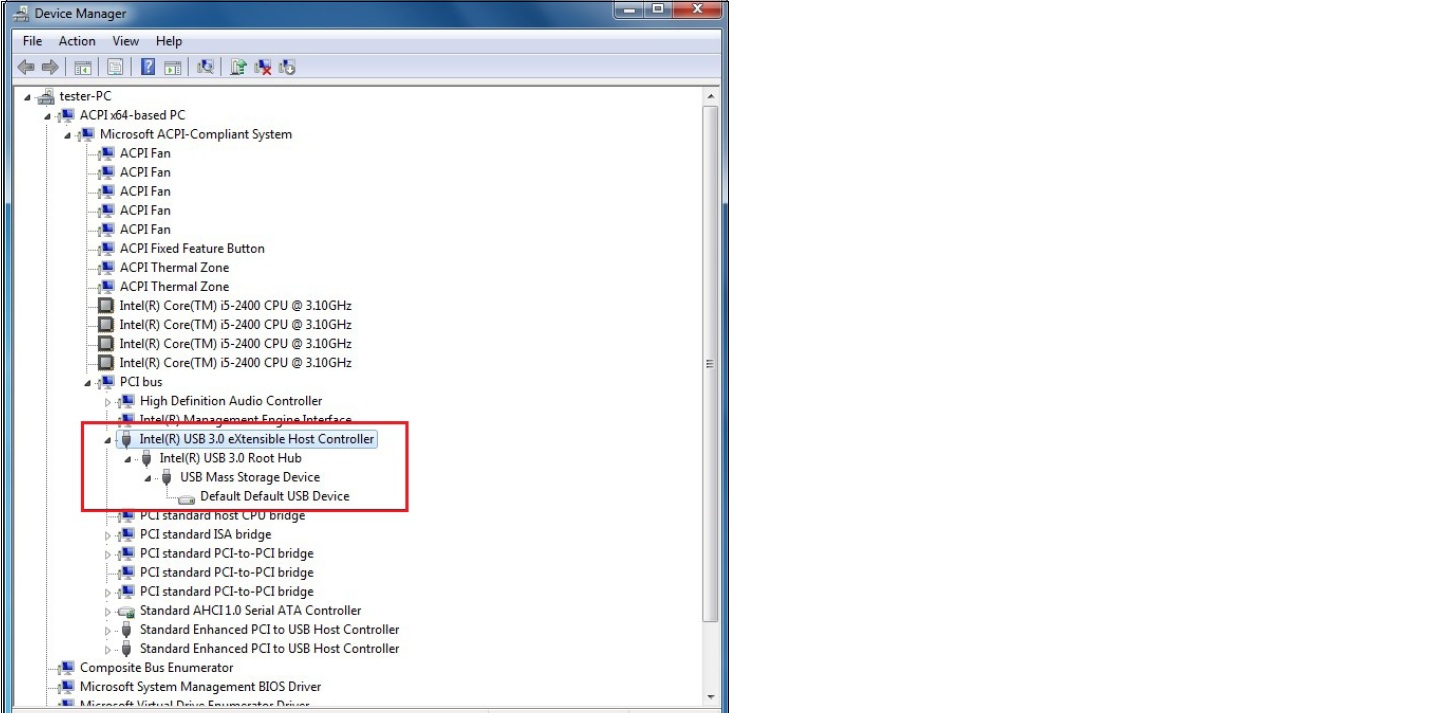- Update Usb Drivers Windows 10
- Microsoft Usb Driver Updates For Windows 10
- Unknown Usb Device Driver Download
Symptoms
If you quickly and repeatedly insert and remove a USB device, the USB port may stop responding. When the port is in this state, it no longer recognizes any USB device, and the USB device will not work.
This article helps you fix the problem.
Prerequisites
You must use administrative credentials to log on to Windows to perform some of the troubleshooting methods that are listed in this article. If this is your personal computer, you are likely already logged on with an administrator account. If this is a computer that is part of a network at work, you might have to ask the system administrator for help.
Update Usb Drivers Windows 10
Resolution
To fix this problem, use the following methods in the order in which they are listed. After each method, check the USB device to see whether the problem is fixed. If the problem is not fixed, try the next method.
This article also includes a workaround that you can try if these methods do not work.
Method 1: Use Device Manager to scan for hardware changes
Motorola Device Manager contains USB drivers and software to connect your Motorola phone or tablet to your computer using a USB cable. Usb driver download - Best answers Download usb driver - Best answers Spvd-012.1 usb driver for windows 10 - Forum - Drivers. Microsoft provides drivers for several USB device classes approved by USB-IF. These drivers and their installation files are included in Windows. They are available in the WindowsSystem32DriverStoreFileRepository folder. See, USB device class drivers included in. TechSpot.com is a technology website offering forums and more, in addition to driver downloads. Finding the driver you want to download is easy and no registration is needed. Like most driver download sites, drivers are organized by type of device. Drivers are downloaded directly from the manufacturer so they should be trustworthy. It’s fairly straightforward to set up Xiaomi USB drivers, simply find and select your device model number and tap “Download”. Now extract the download file and then set up the drivers. Together with USB Drivers installed Windows and Mac, users have the choice to move files & files effortlessly from smartphone to PC and vice-versa.
Use Device Manager to scan for hardware changes. After your computer scans for hardware changes, it might recognize the USB device that is connected to the USB port so that you can use the device.
To scan for hardware changes, follow these steps:
Click Start, and then click Run.
Note If you are running Windows Vista, click Start, and then use the Start Search box.Type devmgmt.msc, and then click OK. Device Manager opens.
In Device Manager, click your computer so that it is highlighted.
Click Action, and then click Scan for hardware changes.
Check the USB device to see whether it is working.
If scanning for hardware changes fixed the problem, you are finished. If this method did not fix the problem, go to Method 2.
Method 2: Restart the computer

If scanning for new hardware did not fix the problem, try restarting the computer. After the computer has restarted, check the USB device to see whether it is working.
If restarting the computer fixed the problem, you are finished. If this method did not fix the problem, go to Method 3.
Method 3: Disable and re-enable the USB controller
Use Device Manager to disable and re-enable all the USB controllers. This lets the controllers recover the USB port from its unresponsive condition. The USB controllers represent the USB ports in Device Manager. If you are not comfortable with advanced troubleshooting, try the steps in the 'Workaround' section.
To disable and re-enable the USB controllers, follow these steps:
Click Start, and then click Run.
Note If you are running Windows Vista, click Start, and then use the Start Search box.Type devmgmt.msc, and then click OK. Device Manager opens.
Expand Universal Serial Bus controllers.
Note You might have to scroll down the list to find this item.Right-click the first USB controller under Universal Serial Bus controllers, and then click Uninstall to remove it.
Repeat step 4 for each USB controller that is listed under Universal Serial Bus controllers.
Restart the computer. After the computer starts, Windows will automatically scan for hardware changes and reinstall all the USB controllers that you uninstalled.
Check the USB device to see whether it is working.
If the USB port recognizes the device and if you can use the device, you are finished.
If this method fixed the problem, you are finished. If this method did not fix the problem, go to the 'Workaround' section.
Workaround
If none of these methods worked for you, you can disable the Selective Suspend feature. However, be aware that when the Selective Suspend feature is disabled, all USB host controller drivers (and therefore all USB ports and connected USB devices) in the system are affected. Therefore, your computer cannot suspend any USB devices that are connected to it, and the USB devices can continue to use power while connected to the computer. Additionally, the Allow the computer to turn off this device to save power check box does not appear on the Power Management tab for the USB Root Hub.
This section is intended for an advanced computer user.
You can disable the USB Selective Suspend feature as a workaround by editing the registry. The USB device may become unresponsive because of a race condition in the Selective Suspend feature. The Selective Suspend feature suspends the USB device to efficiently maintain battery power by enabling the computer to turn off the USB device. However, sometimes this feature may not correctly wake up the USB device. Therefore, the USB device is unresponsive when you try to use it.
You might want to disable this feature for server products where power management is not important or required.
Important This section, method, or task contains steps that tell you how to modify the registry. However, serious problems might occur if you modify the registry incorrectly. Therefore, make sure that you follow these steps carefully. For added protection, back up the registry before you modify it. Then, you can restore the registry if a problem occurs. For more information about how to back up and restore the registry, click the following article number to view the article in the Microsoft Knowledge Base:
Microsoft Usb Driver Updates For Windows 10
322756 How to back up and restore the registry in WindowsTo disable the Selective Suspend feature, follow these steps:
Click Start, and then click Run.
Note If you are running Windows Vista, click Start, and then use the Start Search box.Type regedit, and then click OK. Registry Editor opens.
Locate and then click the following registry subkey:
HKEY_LOCAL_MACHINESystemCurrentControlSetServicesUSB
If the DisableSelectiveSuspend registry entry is present, double-click it. If it is not present, create the entry. To create the entry, follow these steps:
On the Edit menu, point to New, and then click DWORD.
Type DisableSelectiveSuspend, and then press ENTER.
On the Edit menu, click Modify.
In the Value data field, type 1 to disable the Selective Suspend feature, and then click OK.
Now go to the 'Did this fix the problem?' section.
Cause
This problem may occur because of a timing issue that prevents the computer from detecting the USB device.
Microsoft and the hardware vendors that manufacture the chips that are used for USB have investigated the problem. However, the results were inconclusive because of the intermittent nature of the problem.
Status
Microsoft is researching this problem and will post more information in this article when the information becomes available.
For users who find the Apple mobile device USB driver is not showing up in Device Manager, it means your Apple device is not recognized on Windows 10 or the driver for Apple is missing for unknown reasons.
In this sense, you would better manage to download apple mobile device USB driver for Windows 10 to see if the Apple device can be connected to your computer. Your iPhone can’t just be recognized as a camera or in recovery mode on Windows 10.
In order to make your apple device work normally, for instance, import photos, videos or documents to PC, you need to download iPhone drivers for Windows 10.
Related: iTunes Does Not Recognize iPhone on Windows 10
How to Download Apple Mobile Device USB Driver for Windows 10?
If you hope to install the Apple USB driver on your computer, there are several ways open to you.
While at the beginning, if you come into the Apple mobile device USB driver is missing from Windows 10, you may as well choose to uninstall the erroneous iPhone driver and then download a new one for your PC.
Way 1: Uninstall and Reinstall Apple Drivers in Device Manager
In the first place, if you wish to fix apple mobile device driver is not in Device Manager on Windows 10, just attempt to get rid of the Apple driver and then install the latest Apple USB driver in Device Manager.
It is said that Device Manager is capable of getting you updated device drivers in some cases, so for the purpose of solving apple mobile device USB driver missing from Windows 10, you can try to download the driver for your iPhone.
1. Open Device Manager.

2. In Device Manager, under Universal Serial Bus controller, right click the Apple Mobile Device USB driver to Uninstall.
3. Then tick the box of Delete the driver software for this device and then hit OK to move on.
4. Then go back to Device Manager and then under Action, click Scan for hardware changes.
5. After scanning for hardware changes, you can see the Apple Mobile Device USB driver is installed automatically for Windows 10.
Now it is likely that the updated Apple driver is downloaded from Device Manager and there is no more unavailable iPhone driver on Windows 10.
Unknown Usb Device Driver Download
Way 2: Download iPhone Driver Manually
On the occasion where the Device Manager failed to find the apple driver for Windows 10, perhaps you have to download the driver for apple by yourself.
Out of safety, you would better decide to get the apple mobile device USB driver on the apple official site rather than the third-party website.
Just navigate to the Apple official site and then select the driver of your iPhone.
And then download, install it on Windows 10.
With this up-to-date apple mobile device USB driver in Device Manager, your apple would be detected and connected with your computer.
Or for some people who have no time or energy to download the driver by yourself, you can also choose to download apple mobile USB driver automatically by a driver downloading tool.
Tips: How to Fix iPhone or iPad Not Recognized on Windows 10?
Normally, once the new Apple mobile device USB driver is downloaded on Windows 10 when you manage to connect the iPhone or iPad to Windows 10, it will be recognized automatically.
If not, maybe you can try to unplug and then plug in the phone again to see if it works.
In a word, no matter you are to download apple mobile device USB driver just to update the driver for Windows 10 or to resolve apple driver is not showing up in Device Manager on Windows 10, these threes methods are always available for you.
Related Articles:
